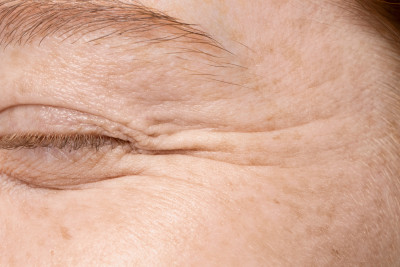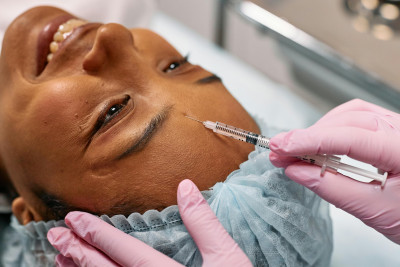
AESTHETIC DERMATOLOGY.
Botulinum toxin type A (commonly known as Botox) is a proven and effective method to gently smooth fine lines and wrinkles and achieve a natural, relaxed look. Here you can find out how the treatment works and what you should consider before, during and after the application.

Botox is mainly used to treat facial wrinkles caused by repeated muscle movements. The most common indications include:
In addition to aesthetic applications, Botox is also used in medical dermatology for various purposes. These include:
Jaw muscle problems: If you have jaw grinding or bruxism, Botox can help relax the muscles and relieve pain.
Hyperhidrosis: Excessive sweating, especially in the armpits, hands or feet, which can be treated with Botox by blocking the sweat glands.
Migraines: In some cases, Botox is also used to prevent chronic migraines by affecting nerve activity in the affected areas.
Due to its versatile applications, Botox has established itself as an important treatment option in both medicine and cosmetic dermatology.
Before the Botox treatment begins, a comprehensive consultation is the priority. Together we discuss your wishes and ideas as well as the individual characteristics of your skin. Botox is particularly suitable for smoothing out expression lines such as crow's feet, forehead wrinkles and frown lines. I will explain the treatment process, possible side effects and give you tips on how to best prepare. It is helpful to avoid blood thinners a few days before the treatment to minimize the risk of small bruises.
The Botox treatment is short and barely noticeable. After gently cleansing the skin, the selected areas are precisely treated with Botox. The injections are barely noticeable with fine needles and do not require anesthesia. Botox works by specifically blocking the transmission of nerve impulses to certain muscles - this relaxes the skin and smoothes out wrinkles. The entire treatment usually only takes 10 to 20 minutes and is carried out in a relaxed practice atmosphere.
After the treatment, there may be slight redness or swelling at the injection sites, but this will quickly subside. In the first few hours after the treatment, you should avoid touching the treated areas and avoid physical exertion for the rest of the day. The effect begins to take effect after just a few days and the skin appears smoother and refreshed, with the full result visible after about 2 weeks.
The effect of Botox usually lasts three to six months. Regular touch-ups ensure a permanently relaxed and naturally youthful appearance, without overcorrection.






